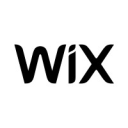Flipsnack vs Canva: Choosing the best platform for your projects
- 01Flipsnack vs Canva: overview
- 02What's the difference between Flipsnack and Canva?
- 03Flipsnack pros and cons
- 04Canva pros and cons
- 05Flipsnack compared to Canva
- 06Canva compared to Flipsnack
- 07Features comparison
- 08Flipsnack vs Canva: Which is the best for your business?
- 09Promotions on Content Management System software
- 10Alternatives to Flipsnack & Canva
Save up to $284 on Flipsnack
Flipsnack
30% off yearly plans
Save up to $284 on Flipsnack
Flipsnack
30% off yearly plans
Choosing the right design platform is essential for content creators, marketers, and businesses looking to produce visually appealing materials quickly and efficiently. With so many design tools available, it can be challenging to decide which one suits your specific needs.
To help you make an informed decision, we’ve conducted a detailed comparison of two of the industry's popular design platforms: Flipsnack vs Canva. Both platforms offer robust design capabilities, but they cater to slightly different audiences and use cases. In this comparison, we'll explore their key features, assess their strengths and weaknesses, and highlight the differences that set them apart. By the end of this analysis, you'll have a clear understanding of which platform is better suited for your design projects, whether you’re focused on digital publications, social media graphics, or marketing collateral.
Flipsnack vs Canva: overview
Flipsnack and Canva are two powerful contenders in the design platform landscape, each offering unique features that cater to a wide range of design needs for individuals and businesses alike.
Flipsnack is renowned for its specialization in creating digital flipbooks, making it an excellent tool for those who focus on interactive publications like magazines, catalogs, and brochures. With its user-friendly interface, Flipsnack provides users the ability to create, publish, and share digital publications seamlessly. On the other hand, Canva is celebrated for its versatility in producing a broad array of design assets. From social media graphics and presentations to marketing materials, Canva offers a massive library of templates and design elements. Its drag-and-drop simplicity and collaboration features make it ideal for both novice and experienced designers looking for quick, professional-looking results.
In this Flipsnack vs Canva comparison, we will dive into their core features, assess their strengths in various design scenarios, and help you determine which platform best fits your design strategy, whether you're crafting interactive publications or versatile visual content for multiple platforms.
What's the difference between Flipsnack and Canva?
Flipsnack and Canva are both popular design platforms, but they cater to different user needs and design philosophies, offering distinct features and user experiences.
Flipsnack excels in the world of digital publishing, specializing in the creation of interactive flipbooks, such as magazines, catalogs, and brochures. It is designed for users who need to convert PDFs or create digital publications from scratch, with a focus on interactivity. Flipsnack allows users to embed rich media, such as videos, links, and forms, directly into their publications, offering a dynamic and immersive experience. Its platform also supports advanced customization features, including branding and analytics, making it a powerful tool for businesses looking to engage their audience through interactive content.
Canva, in contrast, is known for its broad versatility and accessibility. It provides users with a vast array of templates for almost any design need—whether it’s social media graphics, presentations, posters, or marketing materials. Canva’s drag-and-drop interface is highly intuitive, making it ideal for users at any skill level to create polished, professional-looking designs quickly. While Canva includes basic animation features and some interactivity, it is not primarily focused on digital publications like Flipsnack but rather on static and animated design elements across multiple platforms.
When it comes to user interface, Flipsnack has a more focused workflow centered around publishing and digital content creation, whereas Canva embraces a broader approach to design, with templates for nearly every occasion. Canva also supports more extensive collaboration features, enabling teams to work together in real-time on projects.
In terms of pricing, Flipsnack tends to be geared towards professionals and businesses, with advanced features available in higher tiers. Canva, on the other hand, offers a comprehensive free plan with premium options available for users seeking more advanced tools.
Flipsnack pros and cons
What are the advantages of Flipsnack?
- Interactive digital publications: Flipsnack specializes in creating interactive flipbooks, allowing users to embed videos, links, and forms, making it perfect for engaging, multimedia-rich content like brochures, magazines, and catalogs.
- Easy-to-use interface: The platform has a user-friendly, drag-and-drop editor, enabling even novice users to create polished, professional flipbooks without needing technical expertise.
- Custom branding and analytics: Flipsnack offers advanced customization options for businesses, including white-label branding and in-depth analytics to track user interactions with published content.
- PDF conversion: It supports seamless PDF conversion, allowing users to upload and turn existing PDF files into interactive flipbooks without starting from scratch.
- Team collaboration features: Flipsnack enables teams to collaborate on projects, making it ideal for businesses or teams working together on digital publications.
What are the disadvantages of Flipsnack?
- Niche focus: While great for digital publications, Flipsnack’s feature set is relatively narrow, making it less versatile than broader design platforms like Canva, which supports a wider variety of design needs.
- Limited design assets: Compared to other design platforms, Flipsnack has fewer built-in design templates and graphic elements, meaning users might need to import external assets to enhance their projects.
- Pricing for advanced features: Many of Flipsnack's premium features, such as custom branding, advanced analytics, and higher storage limits, are only available in higher-tier paid plans, which may not be suitable for smaller budgets.
- Lack of extensive collaboration tools: While it offers team collaboration, the tools for real-time editing and feedback are not as advanced or streamlined as in platforms like Canva or Google Workspace.
- Mobile app limitations: Flipsnack's mobile app is more limited in functionality compared to the desktop version, restricting users who want to create or edit flipbooks on the go.
Compare Flipsnack to other tools
Canva pros and cons
What are the advantages of Canva?
- Versatile design platform: Canva offers a wide range of design templates and tools for various purposes, including social media graphics, presentations, posters, business cards, and more. It's suitable for both beginners and professionals.
- User-friendly interface: Canva’s drag-and-drop editor is extremely intuitive, making it easy for anyone to create professional-looking designs without the need for advanced design skills or software expertise.
- Large library of templates and assets: Canva boasts a massive collection of pre-designed templates, stock photos, icons, fonts, and illustrations, enabling users to create designs quickly and efficiently.
- Collaboration features: Canva allows teams to collaborate in real-time, offering features like shared folders, comment threads, and live editing, which makes it ideal for team-based projects.
- Free plan with extensive features: Canva provides a free tier that offers a significant number of design tools and templates, making it accessible to users who may not want to invest in premium design software.
What are the disadvantages of Canva?
- Limited advanced design features: Canva, while great for simple designs, lacks advanced design features found in professional software like Adobe Photoshop or Illustrator. It may not satisfy users needing highly detailed or complex design tools.
- Premium content costs: While Canva’s free plan is robust, many of its higher-quality templates, photos, and features are locked behind a paywall. Frequent users may find themselves needing to upgrade to the Pro version for full access.
- Overused templates: Due to Canva’s popularity, many of its free templates can become overused, resulting in designs that may lack originality or uniqueness, especially in industries where visual differentiation is crucial.
- File export limitations: Canva offers fewer advanced export options compared to professional design tools. For instance, users might find limitations in exporting vector files or complex formats, which may affect print quality for certain projects.
- Internet dependency: Canva is primarily an online tool, and while it offers some offline functionality, it heavily relies on an internet connection. This can be a drawback if you're working in areas with limited connectivity.
Compare Canva to other tools
Flipsnack compared to Canva
Flipsnack and Canva serve different design needs, with Flipsnack excelling in the creation of interactive digital publications like flipbooks, brochures, and magazines. It offers specialized features such as embedded multimedia and advanced customization for businesses focused on digital publishing.
Canva, on the other hand, provides a broader range of design tools suited for various media, including social media graphics, presentations, and print designs. While Canva is more versatile and accessible to a wider audience, Flipsnack is tailored for professionals who prioritize interactivity and detailed customization in their digital content.
Is Flipsnack better than Canva?
Whether Flipsnack is better than Canva depends on your specific design needs. Flipsnack excels in creating interactive digital publications, offering advanced features like multimedia embedding and detailed customization options, making it ideal for businesses focused on digital publishing. Canva, however, is more versatile, providing a wide range of design tools for various media formats, including social media graphics and presentations.
For users who need a broader set of design features and an easy-to-use platform for general content creation, Canva may be the better choice. However, if interactivity and digital publication customization are key, Flipsnack outshines Canva in those areas.
What is Flipsnack best used for?
Flipsnack is best used for creating interactive digital publications such as flipbooks, brochures, catalogs, magazines, and reports. It excels in transforming PDFs into dynamic, engaging content with rich media features like embedded videos, links, and forms, making it ideal for businesses and marketers who want to create immersive digital experiences.
Its user-friendly drag-and-drop editor allows for easy customization, while features like white-label branding and analytics cater to professional needs. Flipsnack is particularly valuable for anyone focused on digital publishing, offering tools that enhance the interactivity and presentation of long-form content in a visually compelling way.
Can Flipsnack replace Canva?
Flipsnack cannot fully replace Canva, as both platforms serve different purposes. Flipsnack is specialized in creating interactive digital publications like flipbooks, brochures, and magazines, making it ideal for professionals focused on digital publishing and multimedia content. Canva, on the other hand, offers a broader range of design tools for various media, including social media graphics, presentations, and marketing materials.
While Flipsnack provides advanced features for interactivity and branding, Canva is more versatile and user-friendly for general design tasks. For users needing extensive design options beyond digital publications, Canva remains the better choice.
Is Flipsnack cheaper than Canva?
Flipsnack is generally not cheaper than Canva, especially when considering the range of features included in each platform’s pricing tiers. Canva offers a robust free plan with extensive design tools and templates, while Flipsnack's free tier is more limited in functionality, particularly when it comes to creating and publishing interactive flipbooks.
For advanced features like custom branding, analytics, and collaboration, Flipsnack’s paid plans tend to be more expensive, particularly for businesses. Canva’s Pro plan is more affordable and provides a wider variety of design tools, making it the more budget-friendly option for most users.
Is there a better Content Management System software than Flipsnack?
When evaluating digital publishing tools, it's important to consider if there's better software than Flipsnack that may cater more precisely to your needs.
Several alternatives to Flipsnack include Issuu, Lucidpress, Adobe InDesign, and PubHTML5. The choice of platform depends on your publishing goals, interactivity requirements, design flexibility, and budget. While Flipsnack excels in creating interactive flipbooks with embedded multimedia and offers strong customization features, other tools may provide more advanced design capabilities, broader media options, or different pricing structures. Exploring these alternatives can help you find the software that best aligns with your digital publishing objectives.
30% off yearly plans on Flipsnack
Get 30% off yearly plans on Flipsnack and up to $284 savings with Secret.
Canva compared to Flipsnack
Canva and Flipsnack are distinct in their focus and features. Canva is a versatile design tool ideal for creating a wide range of content such as social media graphics, presentations, posters, and marketing materials. Its vast library of templates and user-friendly interface make it accessible to both beginners and professionals.
Flipsnack, on the other hand, specializes in interactive digital publications like flipbooks, brochures, and catalogs. It allows for embedding multimedia and advanced customization, making it a better fit for businesses focused on digital publishing. While Canva offers broader design capabilities, Flipsnack excels in creating engaging, interactive content.
Is Canva better than Flipsnack?
Canva is better than Flipsnack for users who need a versatile design tool that covers a wide range of creative needs. Its broad selection of templates, easy-to-use interface, and diverse design capabilities make it ideal for creating everything from social media graphics to business presentations. Canva also offers real-time collaboration, making it a great choice for teams.
While Flipsnack excels in creating interactive flipbooks and digital publications, Canva's flexibility and simplicity make it more suitable for general content creation across various media, especially for users who don't require the specific focus on interactivity that Flipsnack provides.
What is Canva best used for?
Canva is best used for creating a wide range of visually appealing designs, including social media graphics, presentations, posters, flyers, business cards, and marketing materials. Its user-friendly drag-and-drop interface, combined with an extensive library of templates, images, icons, and fonts, makes it ideal for users with or without design experience.
Canva excels in quick, easy content creation, allowing individuals, small businesses, and marketing teams to produce professional-looking visuals in minutes. It's particularly useful for social media marketing, branding, and everyday graphic design tasks, making it a go-to platform for versatile design needs across industries.
Can Canva replace Flipsnack?
Canva cannot fully replace Flipsnack, as the two platforms serve different purposes. Canva excels in creating general graphic designs, such as social media posts, presentations, and marketing materials, with a user-friendly interface and a wide variety of templates. However, Flipsnack is specifically designed for creating interactive digital publications like flipbooks, brochures, and catalogs, with features that allow for embedded multimedia and page-flipping effects.
While Canva offers some basic animation and design features, it lacks the advanced interactivity and digital publishing focus of Flipsnack. For users focused on creating interactive publications, Flipsnack remains the better choice.
Is Canva cheaper than Flipsnack?
Canva is generally cheaper than Flipsnack, especially when considering its extensive free plan and more affordable Pro subscription. Canva offers a free tier with a wide range of design tools and templates, while its Pro plan is competitively priced, providing access to premium assets and additional features.
Flipsnack, on the other hand, has a limited free version and its more advanced features, like custom branding, interactivity, and analytics, are locked behind higher-tier plans. For users seeking a budget-friendly design tool, Canva’s pricing is more accessible, making it a better option for most general design needs compared to Flipsnack.
Is there a better Design software than Canva?
When exploring alternatives to Canva in the design software space, it's important to determine if there’s better software that aligns more closely with your specific design needs.
Several noteworthy alternatives to Canva include Adobe Spark, Crello, Visme, Figma, and Adobe Illustrator. Each of these platforms offers distinct features tailored to different aspects of graphic design. Choosing the right tool depends on factors such as your design goals, ease of use, collaboration features, and budget. While Canva excels in versatility and accessibility for beginners, other tools may offer more advanced design capabilities, better collaboration options, or specific features for professional designers looking for greater control over their projects.
Features comparison
Both Flipsnack and Canva Offer Intuitive Drag-and-Drop Interfaces for Seamless Design
Both Flipsnack and Canva feature a user-friendly drag-and-drop interface that simplifies the design process for users of all skill levels. Canva’s interface allows users to effortlessly add elements such as text, images, icons, and shapes, enabling even beginners to create visually striking designs like social media graphics, posters, or presentations.
Similarly, Flipsnack's drag-and-drop editor is designed for ease of use, particularly when creating interactive digital publications like flipbooks, brochures, or catalogs. Users can easily import images, add multimedia elements, and customize their content. However, Flipsnack's focus on interactive features gives it a slightly more specialized edge in digital publishing compared to Canva’s broader design versatility.
Canva Extends Beyond Flipsnack with Comprehensive Image Editing Tools
While Flipsnack focuses primarily on creating interactive flipbooks, Canva offers a more expansive suite of image editing tools, making it ideal for users who need more than just publication creation. Canva’s features include basic adjustments like cropping, resizing, and rotating, as well as advanced tools like brightness and contrast adjustments, filters, and even background removal for images. This makes Canva a versatile platform for creating highly polished visuals for social media, presentations, and marketing materials.
In contrast, Flipsnack’s image editing capabilities are limited, focusing on the placement of images within flipbooks rather than comprehensive image enhancement, giving Canva the edge in image editing flexibility.
Canva Outshines Flipsnack in User-Friendliness for Design Projects
When it comes to ease of use, both Flipsnack and Canva are crafted with user requirements in mind, but Canva stands out with its highly intuitive and user-friendly design. Canva’s drag-and-drop interface simplifies the design process, allowing beginners and non-designers to create professional-looking visuals effortlessly. Its clean layout and straightforward navigation reduce the learning curve, making tasks like creating social media graphics or presentations fast and accessible.
On the other hand, Flipsnack, while powerful for creating interactive digital publications like flipbooks, can be more complex for new users due to its specialized tools for embedding media and customizing digital content.
Canva Takes the Lead Over Flipsnack in Integration Capabilities
Both Flipsnack and Canva offer a solid array of integrations, but Canva excels with its more extensive and advanced options. Canva integrates seamlessly with a variety of platforms, including social media channels like Facebook, Instagram, and Pinterest, as well as cloud storage services like Google Drive, Dropbox, and OneDrive. These integrations make it easy for users to directly import assets or publish designs across platforms with minimal effort.
Flipsnack, while offering useful integrations such as Google Analytics and Shopify for tracking engagement and selling digital publications, focuses more on niche, publishing-related connections, making it less versatile than Canva in this regard.
Flipsnack Surpasses Canva in Privacy Control and Content Access Management
While both Flipsnack and Canva provide privacy settings, Flipsnack stands out with more detailed control over who can access content. Flipsnack enables users to set specific privacy options for their digital publications, offering choices like public sharing, private access with a password, or even restricted access to certain groups or individuals. This level of control is especially useful for businesses or publishers managing sensitive or proprietary content, such as internal reports or client materials.
Canva, while offering some privacy settings for shared designs, lacks the same granular access management, making Flipsnack the preferred choice for those prioritizing privacy and control.
Canva’s Expansive Template Library Surpasses Flipsnack for Design Versatility
Canva boasts an extensive library of professionally designed templates, covering a broad spectrum of needs such as social media posts, presentations, infographics, business cards, and flyers. Its collection, which includes thousands of customizable templates, significantly reduces the time needed to create high-quality designs, even for beginners. Canva’s templates are organized by category, making it easy to find the right fit for any project, whether it's an Instagram story or a business presentation.
While Flipsnack also offers templates, its focus is more limited to digital publications like flipbooks and brochures, giving Canva a clear edge in template variety and versatility.
Flipsnack Excels Over Canva with SEO-Friendly Features for Digital Publications
Flipsnack's flipbooks are designed with SEO optimization in mind, offering creators the ability to enhance their online presence by improving visibility in search engine results. By allowing users to add meta descriptions, keywords, and titles to their publications, Flipsnack ensures that digital content like brochures, magazines, and catalogs can be easily discovered by search engines. This feature is particularly beneficial for marketers and content creators looking to drive traffic and boost engagement.
Canva, while excelling in design versatility, does not offer integrated SEO tools for its designs, making Flipsnack the superior choice for those prioritizing search visibility for their digital publications.
Subscribe to our newsletters.
No FOMO here. Stay up-to-date on all the latest deals and news with our monthly newsletter straight to your inbox like 126,000+ entrepreneurs (+ Get 10% off on on our Premium Membership!)
Flipsnack vs Canva: Which is the best for your business?
Flipsnack is the best tool for you if:
- You want to create interactive digital publications like flipbooks, brochures, and catalogs with embedded multimedia elements such as videos, hyperlinks, and audio, offering a dynamic experience for your readers.
- You need advanced customization features such as white-label branding, allowing you to maintain a consistent visual identity across all your digital publications for professional and business purposes.
- You are looking for a platform that supports team collaboration, enabling multiple users to work together seamlessly on the same projects, especially for larger organizations or content production teams.
- You value detailed analytics, as Flipsnack provides insights into how readers engage with your content, helping you measure performance and optimize future publications.
- You require privacy control features, with the ability to restrict access to certain users or groups, making Flipsnack ideal for businesses needing secure content distribution.
Canva is the best tool for you if:
- You need a versatile design tool for creating everything from social media graphics and presentations to flyers and business cards, offering thousands of customizable templates for various projects.
- You want an easy-to-use, drag-and-drop interface that simplifies the design process, making it accessible for beginners and non-designers to quickly produce professional-quality visuals.
- You require a platform with strong collaboration features, allowing teams to work on designs in real time, share feedback, and manage assets from one centralized workspace.
- You seek a cost-effective solution, as Canva offers a comprehensive free plan with affordable premium options for users needing access to additional features and assets.
- You prioritize seamless integration with other tools, as Canva supports platforms like Google Drive, Dropbox, and social media channels for easy file sharing and direct publishing.
Alternatives to Flipsnack & Canva
Promotions on Content Management System software
Start saving on the best SaaS with Secret.
Secret has already helped tens of thousands of startups save millions on the best SaaS like Flipsnack, Canva & many more. Join Secret now to buy software the smart way.















